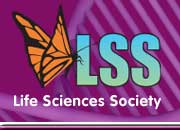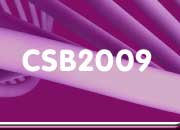Tutorial Abstracts
AM1. Integrated Analysis and Visualization of Exon Array Data
AM2. Building and Evaluating Algorithms for Finding Transcription Factor Binding Sites
PM1. Cytoscape for Network Visualization and Analysis
PM2. Working with Bioconductor Tools for High-Throughput Sequencing Data: ShortRead, GenomeGraphs, and IRanges
AM1. Integrated Analysis and Visualization of Exon Array Data
Nathan Salomonis, J. David Gladstone Institutes, Dept. of Cardiovascular Disease
Dorothea Emig, Max Planck Institute for Informatics, Computational Biology & Applied Algorithmics
Alternative splicing is an important mechanism to increase protein diversity; however, the effects are still mainly unknown. Here, we introduce the combined
workflow of AltAnalyze and DomainGraph that enables researchers to statistically analyze their exon expression data and to visualize the potential effects
on proteins, domains, miRNA binding sites (miRBS), interactions and pathways. In this tutorial will include show participants how Affymetrix Exon 1.0 ST
array data can be loaded in AltAnalyze to produce tabular gene expression, alternative exon, domain/miRBS over-representation results. Loading these results
into the Cytoscape plugin DomainGraph will illustrate how regulated probesets may effect mRNA/protein/domain/miRBS composition and which align to biological
pathways or networks. Information on these applications, including executables, documentations, online tutorials and sample files can be found below at
http://www.AltAnalyze.org
Intended audience:
Biologists/Bioinformaticians (no expertise in computer science/stats required)
Return to Top or Tutorial Schedule
AM2. Building and Evaluating Algorithms for Finding Transcription Factor Binding Sites
Daniel J. Quest and Hesham H. Ali, University of Nebraska, Depts. of Pathology and Microbiology / Information Science and Technology
In recent years, over 150 methods have been developed for detecting transcription factor binding sites (TFBS) in a set of sequences. The problem of
detecting regulatory binding motifs is well known in computational biology circles. At this time it is unclear what methods are best for predicting
transcription factors in a given organism or based on structural properties. Attempts to rank TFBS detection methods have emerged in recent years.
This tutorial will cover MTAP (Motif Tool Assessment Platform), a method for ranking transcription factor binding sites. MTAP represents one of the
first automated systems for grading how well a particular TFBS detection software corresponds to a set of known sites over an entire genome. MTAP
contains parsers for approximately 20 well known prediction methods. In addition, MTAP contains visualization tools for comparing methods and integration
tools for running multiple methods. This tutorial will cover how to use MTAP to assess new TFBS detection algorithms, and how to use MTAP to gain
insight into properties that may be relevant for more accurate TFBS detection. In addition, it will show how the MTAP pipelines can be leveraged to
build prediction methods that integrate the advantages of multiple methods. Finally, this tutorial will show how the structure of regulatory control
graphs and regulatory interaction mechanisms can be leveraged to improve prediction accuracy.
Intended audience:
Computer Scientists, Bioinformaticians
Return to Top or Tutorial Schedule
PM1. Cytoscape for Network Visualization and Analysis
Alexander Pico, The Gladstone Institutes, Dept. of Cardiovascular Disease
Cytoscape is an open source bioinformatics software platform for visualizing molecular interaction networks and biological pathways and integrating these
networks with annotations, gene expression profiles and other state data. The core of Cytoscape is a basic set of features for data integration and
visualization, which is extensible via plugins. Plugins are available for network and molecular profiling analyses, advanced layouts, additional
file format support, scripting, and connection with databases. This tutorial will cover both the core concepts of Cytoscape and a variety of available
plugins, all in the context of high-throughput biological data, relevant networks and pathways, and research-oriented inquiries and workflows. Resources
and opportunities for programmers interested in developing plugins for Cytoscape will also be presented.
Intended audience:
Researchers and bioinformaticians interested in network analysis
Return to Top or Tutorial Schedule
PM2. Working with Bioconductor Tools for High-throughput Sequencing Data: ShortRead, GenomeGraphs, and IRanges
Jim Bullard, University of California Berkeley, Dept. of Biostatistics
With the explosion of high-throughput sequencing machines, analysts are rapidly trying to understand and work with the vast quantities of data produced
in a given sequencing experiment. In this tutorial, I will describe some of the available Bioconductor tools for working with these data. The focus of
the analyses conducted in this tutorial will tend towards differential expression and genome annotation, i.e. mRNA-Seq, as opposed to other analysis
(e.g. DNA re-sequencing, Chip-Seq), however the treatment should be general enough to supply a beginning user with a good introduction to the various
Bioconductor tools for the management and visualization of sequencing data.
Intended Audience:
Users taking this tutorial will have a working knowledge of R and hopefully use it in their analysis. A knowledge of Bioconductor tools will be helpful,
but not necessary. Additionally, users will have encountered sequencing data or hope to encounter the data in their work.
Return to Top or Tutorial Schedule


